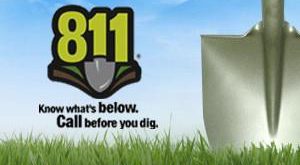
by Sheila Dunning | Apr 1, 2021
 Call 811 before you dig. No one wants a weekend project to be the cause of internet, phone and cable outages. Worse yet, what if someone gets hurt from contact with natural gas or electrical lines? That’s why it is so important to have buried utilities in the yard located and marked before digging. Sunshine 811 coordinates each individual company to clearly mark where the service lines are located. Homeowners are required by law to contact 811 three days before any soil removal is done. The service is free.
Call 811 before you dig. No one wants a weekend project to be the cause of internet, phone and cable outages. Worse yet, what if someone gets hurt from contact with natural gas or electrical lines? That’s why it is so important to have buried utilities in the yard located and marked before digging. Sunshine 811 coordinates each individual company to clearly mark where the service lines are located. Homeowners are required by law to contact 811 three days before any soil removal is done. The service is free.
Have information prepared before making the request. Describe the work to be performed (e.g. fence install, landscaping, irrigation install), including the type of equipment that will be used. Specify the exact location on the property and how long the work will continue. Finally, provide all the contact information (e.g. name, phone number, e-mail), should there be any additional questions.
Call 811 or request a single address ticket online. Receive a ticket number and wait two full business days, not counting weekends or holidays. Then contact 811 again. Make sure that all the utilities have responded in the Positive Response System (PRS). Sometimes that may mean that the company doesn’t have anything to make in the area.
If there are utility lines running through the yard, they will be marked with specifically colored paints or flags. Red is used for electrical lines, orange indicates communication lines, yellow means gas, blue is used for potable water, purple is reclaimed water, and green indicates sewer lines. White lines may be used to outline digging areas and pink are temporary survey marks. This is the APWA Uniform Color Code.
Every effort is made to locate the lines as accurately as possible. But, the safest thing to do is hand dig to expose the utility line before using any mechanized equipment. Lines can vary up to 24” from the marked line and depths can be less than 5”. Remember there may be access lines running through the property even if that service isn’t utilized at that address.
Keep safe this spring. Call 811 before digging.
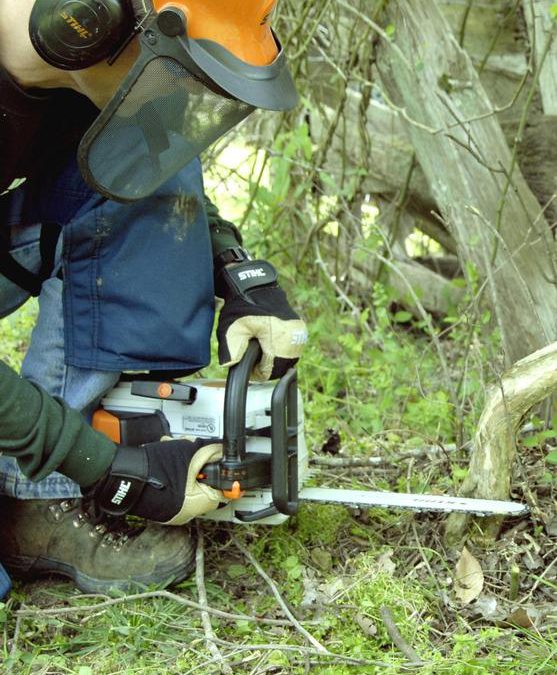
by Mary Salinas | Oct 29, 2018
When there is so much to do in cleaning up after a storm, sometimes we tend to do too much so that it can all get done. Be safe, don’t add to the disaster.
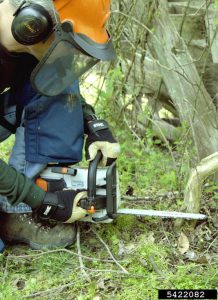
Be careful with that chainsaw! Photo credit: James H. Miller, USDA Forest Service, Bugwood.org.
Here are some suggestions:
- Take breaks and rest often. Mistakes happen when people are exhausted.
- Only lift what you can comfortably handle, lifting with your legs and not your back. Get a buddy to help with heavier objects or wait until a team or equipment can assist.
- Make sure you are adequately hydrated. Always keep water nearby and take a long drink during your breaks.
- Protect yourself against biting pests such as mosquitoes with insect repellent.
- Wear protective gloves, sturdy closed toe shoes and long pants.
- Have a first-aid kit available for minor injuries.
- Make sure ladders are stable and locked into position.
- If you are using any type of power equipment, especially a chainsaw, make sure someone else is around. And protective gear is a must. Read about details in this article.
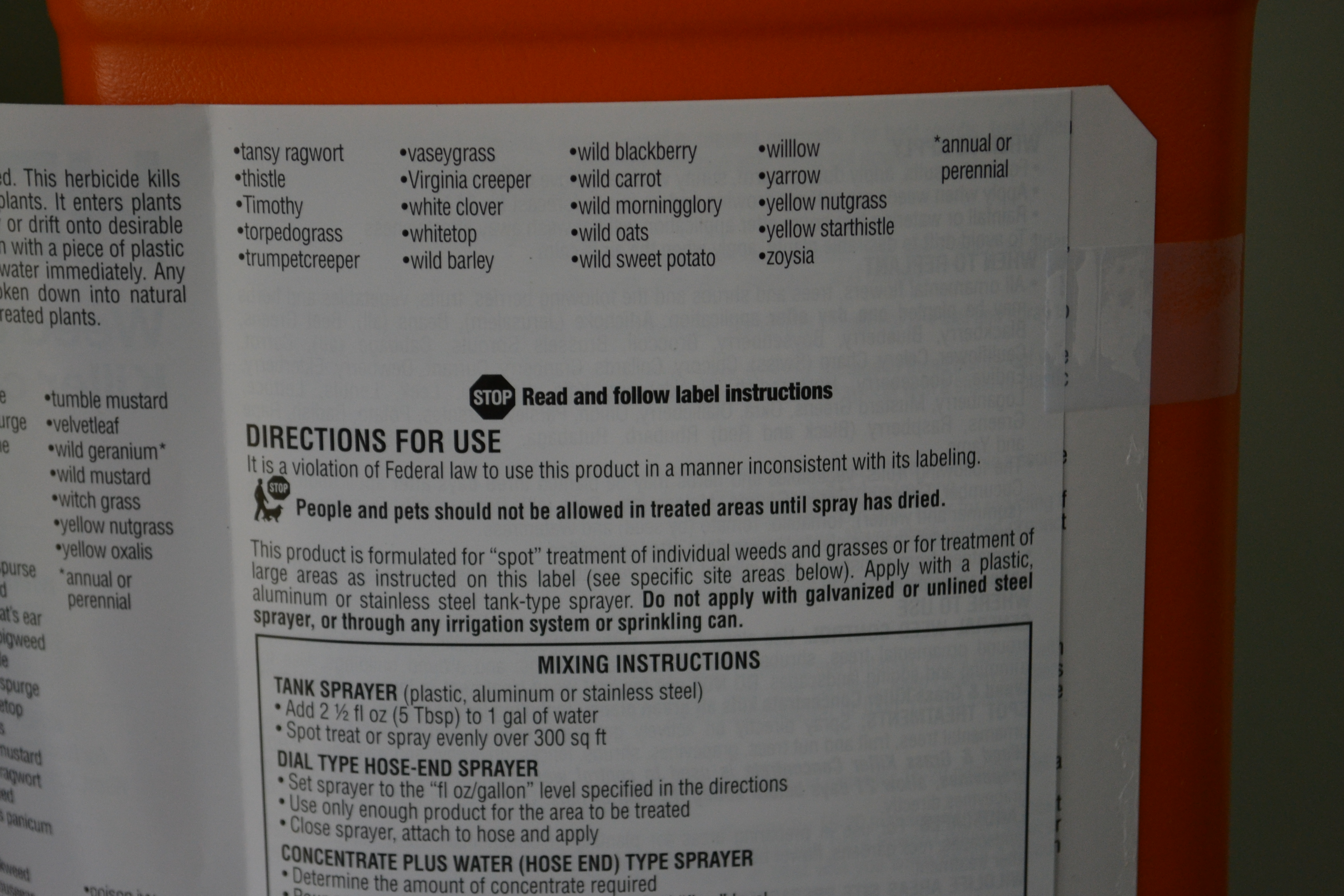
by Beth Bolles | Jul 21, 2014
You hear it all the time. Be sure to read the label before using any pesticide. Honestly though, is this a practice you really follow? It should be.
Sometimes we do not consider pesticides dangerous since we can buy them in most any retail store or garden center. Companies surely would not sell something to an average homeowner that is too toxic or dangerous.
Pesticides are chemicals that are used to kill insects, plants, and sometimes mammals. Even though many of the most dangerous chemicals are not available to homeowners, the products you find on stores shelves should still be used with care and attention. It is important to read the label. If not only to protect yourself, but to protect pets, children, wildlife, and water systems.
Each pesticide that you buy will come with a label. This label contains important information about the product. The following is a guide to the information found on a pesticide label and why it is required by law that you read it.
Active Ingredient: This is the chemical name of the pesticide and the part of the product that is active against the pest. Before buying your pesticide, look at the active ingredient to make sure that you are purchasing the right product for your specific job. You can not always judge a product by the trade name or brand name since several very different pesticides may have the same or very similar brand names.
Signal Words: The pesticide will either have Caution, Warning, or Danger in bold letters on the label. These words tell us the product’s level of toxicity. Caution – slightly toxic, Warning – moderately toxic; Danger – highly toxic. Most homeowner products will carry the Warning or Caution signal words.
Environmental Hazards: Many pesticides are toxic to birds, invertebrates, and mammals. Some products may not be used near water in order to protect wildlife. This section will guide you in ways to prevent damage to animals, groundwater, and soil.
Direction for Use. Each label will state how to apply the product so that it is most effective against the targeted pest. This will include rates, timing of applications, and pests controlled by the product. It is never beneficial to apply more than the label states.
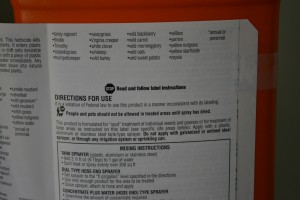
Pesticide labels are the law and must be followed.
Every label will contain additional information on precautions that need to be followed to safely use the pesticide and treatment if there is an accident. Since we are not able to predict when an accident will happen, make sure that you are always prepared by reading any pesticide label you will be using.

 Call 811 before you dig. No one wants a weekend project to be the cause of internet, phone and cable outages. Worse yet, what if someone gets hurt from contact with natural gas or electrical lines? That’s why it is so important to have buried utilities in the yard located and marked before digging. Sunshine 811 coordinates each individual company to clearly mark where the service lines are located. Homeowners are required by law to contact 811 three days before any soil removal is done. The service is free.
Call 811 before you dig. No one wants a weekend project to be the cause of internet, phone and cable outages. Worse yet, what if someone gets hurt from contact with natural gas or electrical lines? That’s why it is so important to have buried utilities in the yard located and marked before digging. Sunshine 811 coordinates each individual company to clearly mark where the service lines are located. Homeowners are required by law to contact 811 three days before any soil removal is done. The service is free.



